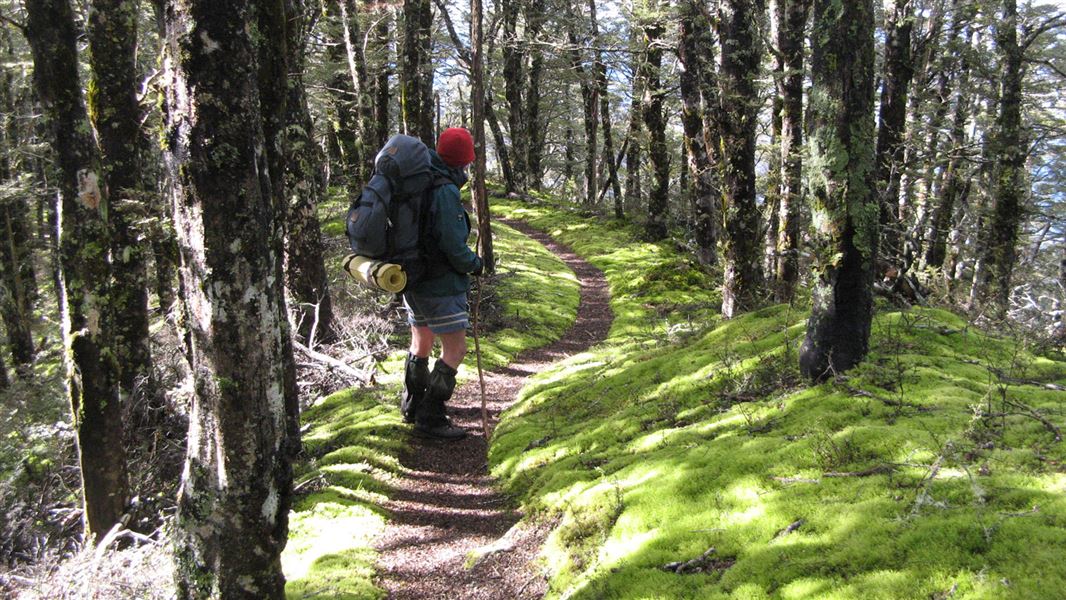- Picnic and camping spots are located at road ends.
Kaweka Forest Park is north-west of Napier.
Comet Road
Access to Comet Road is off the Napier-Taihape Road, 7 km west of Kuripapango (83 km west from Napier). This 3.3 km 4WD track gives access to the Kaikomata Range and southern part of Kaweka Forest Park. Walking tracks link from the road end to Komata Hut and the northern part of Ruahine Forest Park.
Kaweka Road
Gives access to Ferny Ridge, Littles Clearing, Black Birch Range and Makahu Saddle. Kaweka Road is 64 km west of Napier off Whittle Road.
Lotkow Road
Gives access to Gorge Stream and Donald River area and is accessed from Whittle Road 64 km west of Napier.
Lakes Carpark
Is accessible via Kuripapango Road. This carpark gives access to Kiwi Saddle and MacKintosh areas of the Kaweka Forest Park.
Lawrence Carpark
Accessed from Lawrence Road, 66 km west of Napier.
Makahu Road
Is 72km west of Napier and gives access to Te Puia Track, Mangatutu camping area, Makino and Middle Hill huts. Makahu Saddle provides access to Kaweka J.
Whittle Road
Is accessed off Puketitiri Road 60 km west of Napier. It gives access to Lotkow and Kaweka roads.
Safety
This is a mountainous area. Visitors should be prepared for sudden weather changes, whiteouts, high winds on the ranges and rapidly rising water levels in rivers and streams. The Puketitiri area is in the rain shadow of the Kaweka Ranges.
Weather forecast
Kaweka J Summit weather forecast – NIWA website
Fires
Extreme fire conditions can exist during summer. The park is a restricted fire area, which means permits to light fires are required all year round.
Kuripapango (Ox Bow) and the Mangatutu campsites have a year round total fire ban for public safety. No fires are permitted in these areas
Maps
The Land Information New Zealand (LINZ) topographical maps that cover the Kaweka Forest Park are:
Topo50 map BH36 - Motutere
Topo50 map BH37 - Rangitaiki
Topo50 map BH38 - Te Haroto
Topo50 map BJ36 - Tawake Tohunga
Topo50 map BJ37 - Kuripapango
Topo50 map BJ38 - Te Pohue
Topo50 map BK37 - Tikokino
Natural vegetation on the eastern facing country has been extensively affected by fire and introduced animals. The former blanket of forest has almost totally gone. In its place are remnants of rapidly regenerating manuka and kanuka.
On the open tops of the Kaweka Range there are sub alpine shrublands, tussock and hardy alpine herbs and flowers. On the flanks of the range red and mountain beech are the predominant trees.
At lower altitudes, in the river valleys, there are pockets of podocarp forest (rimu, miro, matai) and varied broadleaved species such as lacebark, five finger and kohuhu.
Despite the modification that has occurred several rare, threatened species have been recorded in the area. These include the North Island brown kiwi, New Zealand falcon (karearea), North Island kaka, and blue duck, dactylanthus and mistletoe.
Visitors to the area may be treated to the sight or sound of yellow crowned parakeet, whitehead (popokatea), North Island fernbird (matata), bellbird (korimako), tui, North Island robin (toutouwai), grey warbler (riroriro) tomtit (miromiro), NZ pigeon (kereru), rifleman (titipounamu) kingfisher (kotare), NZ pipit (pihoihoi) fantail (piwakwaka), silver eye (tauhou), welcome swallow, and, in summertime, long tailed cuckoo (koekoe), are all present.
A total of ten native freshwater fish species has been recorded in the Mohaka River.
Learn about the history of Kaweka Forest Park - it goes back to pre-European times. Today, there are several heritage sites - Iron Whare, Manson Hut, and Robson's Lodge.
DOC Customer Service Centre
| Phone: | 0800 275 362 |
| Email: | napier@doc.govt.nz |
| Address: | Ahuriri / Napier Office |
